Tomorrow’s World
What does technology mean to you? The acme of human endeavour, using the talents of the human race’s finest minds to improve the lives of the many? An evil manifestation of corporate greed and oppression? A perverse abuse of nature’s resources? Or a subject so absurdly wide and various as to make ridiculously simplistic questions like this a complete waste of everyone’s precious time? It is, of course, all of these. But especially the last one. Which is why any TV programme attempting to convey the raw details of scientific progress across the board has got its work cut out, to say the least. When said programme chooses a cheery, early evening slot in which to parade science’s latest wares like a succession of non-commissioned vacuum cleaner salesmen beating a regular path to your door with the latest Electrolux and a bagful of soot, you can see where it might come unstuck.
So spare a thought for the boys and girls of Tomorrow’s World, Britain’s flagship gizmological showcase which was forged in the optimistic, can-do, boy scout atmosphere of the 1960s, only to run slap bang into the oil-strapped ’70s, trip clumsily over the silicon-fearing ’80s, and somehow stumble through the not-overly-arsed ’90s with barely a flicker of self-doubt registering on its determinedly progressive fizzog. Well, maybe one or two…


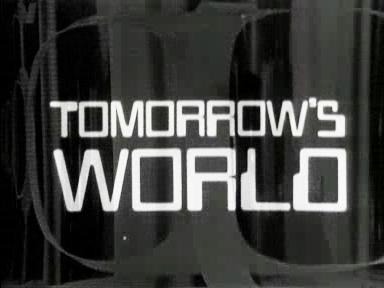 For such a venerable broadcasting institution, the genesis of Tomorrow’s World was pleasingly slapdash and humble. In 1965, an early evening “popular science” format was commissioned by Aubrey Singer (who would later become controller of BBC2 and deputy director general), and devised and initially produced by Glyn Jones. The show had a rather inauspicious start. It was originally conceived as a temporary filler for an early evening gap in the BBC1 schedules, and there was little preparation. The show’s title was only thought up by Jones and his wife at home the night before the Radio Times wanted information for the show’s billing.
For such a venerable broadcasting institution, the genesis of Tomorrow’s World was pleasingly slapdash and humble. In 1965, an early evening “popular science” format was commissioned by Aubrey Singer (who would later become controller of BBC2 and deputy director general), and devised and initially produced by Glyn Jones. The show had a rather inauspicious start. It was originally conceived as a temporary filler for an early evening gap in the BBC1 schedules, and there was little preparation. The show’s title was only thought up by Jones and his wife at home the night before the Radio Times wanted information for the show’s billing.
Slotting in between the early evening news and Top of the Pops, the programme showcased a broad selection of new inventions and developing technologies, from the important to the most trivial, via studio demonstrations and location films. Putting the emphasis firmly on what Singer called the “gee whiz factor” of science and technology, the programme’s style was positive and optimistic about technology, in tune with the prevailing mood of the times. Popular themes of the ‘just around the corner’ excitement of the early shows included umpteen variations on the flying commuter, groovy artificial fabrics with far out properties, and big, awesome constructions on land and sea. It was all very sleek, very chemical, very supersonic and, in its own respectable way, rather hip. This was the future, happening now!
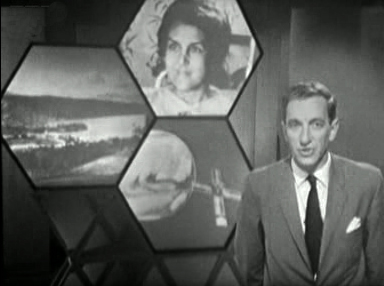 THE PRESENTERS: For the first twelve years of its life, the ‘World was the domain of BBC commentator and ex-Spitfire pilot Raymond Baxter, who had worked with Singer and Jones on a number of previous science-based programmes such as Eye on Research. Baxter was old school BBC, plummy of voice and stiff of lip, but could lend himself to a spot of light-hearted quizzicality when introducing some of the less serious items. Also narrating was Derek Cooper, the similarly authoritative voice of Michael Apted’s 7 Up documentaries among other things.
THE PRESENTERS: For the first twelve years of its life, the ‘World was the domain of BBC commentator and ex-Spitfire pilot Raymond Baxter, who had worked with Singer and Jones on a number of previous science-based programmes such as Eye on Research. Baxter was old school BBC, plummy of voice and stiff of lip, but could lend himself to a spot of light-hearted quizzicality when introducing some of the less serious items. Also narrating was Derek Cooper, the similarly authoritative voice of Michael Apted’s 7 Up documentaries among other things.
The “wild card” in the pack was James Burke. A former English teacher and interpreter at the Vatican, Burke came to the BBC from Granada TV, and quickly made a name for himself anchoring the Beeb’s coverage of major US and Soviet space launches, which he threw himself into with the wild-eyed enthusiasm of a born educator. As far as the ‘World was concerned, he cut a slightly eccentric, mad-haired figure next to his more restrained co-hosts, staring intensely through his specs at the camera as his head filled the screen in the extreme close-up shots that were the bread and butter of low-definition sixties television. A raffish sports jacket amongst the patrician blazers, Burke was instrumental in securing the youth demographic, who after all were, as the lady sang, the future, and would become a key part of the programme’s constituency. He left in the mid-’70s to concentrate on his quixotic – and highly successful – science documentaries, beginning with the famed Connections (wherein, many a more Baxterian viewer complained, the Burkeish personality had a tendency to overtake, and even obscure, the sober scientific instruction).
THE TITLES: For the first series, the programme pretty much fell onto the screen to a bit of parping dinner jazz courtesy Marius Constant, who may have created an iconic theme for The Twilight Zone but didn’t really set Baxter’s joint a-jumping,0 so for the second run a new theme was commissioned. And what a commission it was. Johnny Dankworth’s iconic ‘dance band caught in a sneezing fit’ jazz workout soundtracked a montage of sleek new Centre-Pointy buildings and exciting-looking technologies, often demonstrated by ‘with-it’ Jackie O-haired female models, before the title appeared in a BBC captions department own-brand version of the none-more-futuristic Data 70 typeface. You know, the one that goes along the bottom of chequebooks. Or at least used to. Groovy!
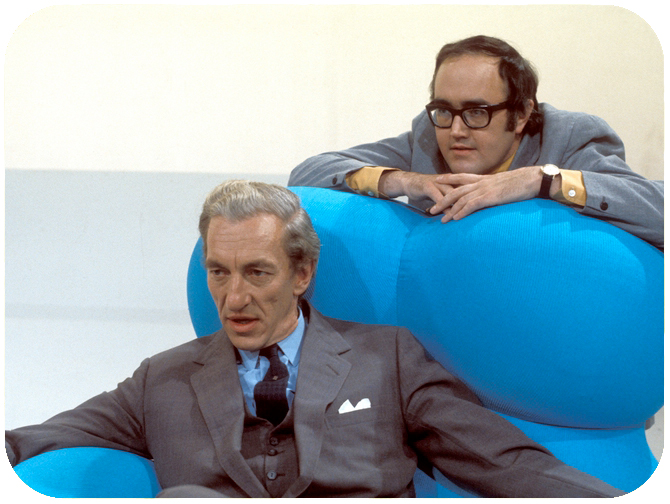


The golden years of the ‘World, or at least the incarnation that springs readily to mind for most people, date from shortly after the introduction of colour, and the addition of new presenters to the team. Now sandwiched between the ‘Pops and Nationwide, the format grew incredibly popular, averaging 8-l0 million viewers by the latter part of the decade. The tone and content of the programmes remained unchanged from the early days, although as the decade wore on, a slightly less unquestioningly optimistic, more sideways approach inevitably began to set in, less Wilson’s “white heat” and more Heath’s “grey fog”.
Science and technology were increasingly less lauded, and the ‘World had no option but to reflect this. Stocking filler inventions and new medical techniques gradually got the edge over the wonder plastics, space missions and autogyros of the old days. But the brand had been forged and taken in by the viewing public, and the increasing popularity of the show resulted in a few extra-curricular ventures. In March 1978 a 500th edition special mocked up a “house of the future”, demonstrating in-development gadgets that would – touch bakelite – be commonplace a few years hence.
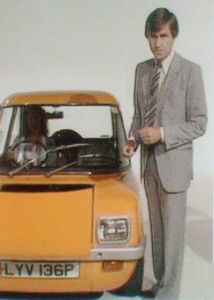 THE PRESENTERS: It was all change in 1974, with Baxter augmented by three new presenters, introducing a more ‘democratic’, less upper middle class feel to the show – William Woollard, the gruff, blonde future Top Gear presenter, who, while still possessing a fine decanter-on-the-sideboard accent, wore polo necks and had the air of a fashion photographer who may once have “seen” Princess Anne.
THE PRESENTERS: It was all change in 1974, with Baxter augmented by three new presenters, introducing a more ‘democratic’, less upper middle class feel to the show – William Woollard, the gruff, blonde future Top Gear presenter, who, while still possessing a fine decanter-on-the-sideboard accent, wore polo necks and had the air of a fashion photographer who may once have “seen” Princess Anne.
The ‘World‘s first female presenter, Judith Hann, favoured a more schoolmarmy approach, enunciating the script deliberately and precisely, with almost balletic flourishes of the hands when it came to prizing off the outer electron shell of a model atom. As the ’80s hoved into view, she would instigate the trend for female ‘Worlders to don DayGlo jumpsuits at a moment’s notice.
The best indication of the way the ‘World, and BBC presentation in general, was headed, however, was to be found in the emergence of the boyish, blow-dried Michael Rodd. If Baxter was being recast more as the headteacher, Rodd was every inch the smart-yet-affable grammar school prefect, the approachable young science teacher you wished you had at school.
Although these three new recruits enabled the programme to step away from the often newsreely atmos of the old days, a couple of later additions to the team, replacing Woollard and Baxter, moved the style still further away from formality, often teetering dangerously close to self-parody. Former reporter and That’s Life “nancy” Kieran Prendiville, a gangly, slightly scruffy man perpetually on the verge of turning into Douglas Adams, was one of the first to start reacting to the technology on show in a manner more akin to the viewer at home than the serious-minded boffin, which would soon come to represent the defining characteristic of the programme in the popular consciousness. As he sheepishly admitted, “I had no idea this programme went out live when I joined it!”
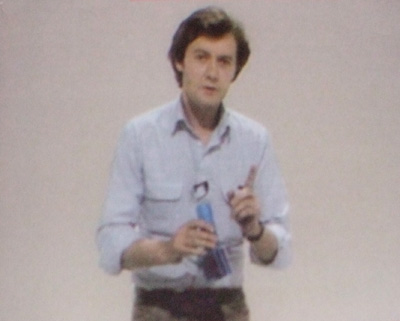 And the popular consciousness was becoming less easily impressed by gizmos. People’s appetite for the future was starting to wane. When it was all abstract, all jet packs and bubble domes, it was a game, with no human dimension. Now those charming robot butlers were muscling in on the production line, technologically outmoded petrol pump attendants were drawing not four-star but the dole, and Michael Barratt ran a Nationwide investigation into the domestic peril innocent folk were plunged into by the tape-spooling misfires of their “friendly, neighbourhood computer”. The sixties white heat was starting to leave a nasty burn, and the general tone of science programmes became noticeably less celebratory, with ecological disasters, mass unemployment and wars taking precedence over smiling Aryan families playing zero-gravity squash. How would Tomorrow’s World‘s chirpy optimism fare in the next overcast decade?
And the popular consciousness was becoming less easily impressed by gizmos. People’s appetite for the future was starting to wane. When it was all abstract, all jet packs and bubble domes, it was a game, with no human dimension. Now those charming robot butlers were muscling in on the production line, technologically outmoded petrol pump attendants were drawing not four-star but the dole, and Michael Barratt ran a Nationwide investigation into the domestic peril innocent folk were plunged into by the tape-spooling misfires of their “friendly, neighbourhood computer”. The sixties white heat was starting to leave a nasty burn, and the general tone of science programmes became noticeably less celebratory, with ecological disasters, mass unemployment and wars taking precedence over smiling Aryan families playing zero-gravity squash. How would Tomorrow’s World‘s chirpy optimism fare in the next overcast decade?
The answer seemed to be, “by mucking about”. General horseplay for the regulars was encouraged. Michael Rodd even got to sing a couple of self-penned technology-related blues parodies, apropos nothing in particular. In BBC parlance, the show, while never really a serious scientific programme, was now an “institution”, and could, for better or worse, do more or less what it liked. By the end of the seventies, the programme was being billed thus: “Michael Rodd, Judith Hann and Keiran Prendiville take their weekly journey into the future, reporting mainly on the achievements, but occasionally on the failures, of the scientists and technologists who are shaping our futures.” In other words, yes it’s still a basically worthy programme, but don’t worry, something’s bound to fall over at some point, so keep watching, do…
THE TITLES: Again, this incarnation is the one most commonly associated with the ‘World. To the same Johnny Dankworth tune (if it ain’t broke…) the letters of the tiles were spelt out one by one in various amusingly scientific ways – as a fried egg, a collection of ball bearings, rising through mercury, cooked on a slice of toast, etc. Much reversing of film and time lapse was in evidence. Finally the whole title was spelt out in ball bearings, which anti-scattered in reverse as Johnny and the boys wound up the jaunty brass riff. A brilliantly crafted little sequence.



Trouble was brewing for the programme as the decade turned. By sticking to its original format for so long, it had painted itself into something of a corner. The space shuttle aside (which was covered enthusiastically throughout its back-of-a-Jumbo development through to the troubled launch, with the help of a returning James Burke) most of the big scientific developments were less than telegenic, and the “gee whiz” breakthroughs had largely given way to various large manufacturing companies toting “an improved version of” a previously covered technology. Still important, no doubt, but not half as sexy.
Still, the format remained good for a few extra-curricular giggles. Amusing Christmas specials were tried out: the first featured the gang unwrapping a studio-sized present containing tech-based gift ideas, an affable version of the soon-to-be-ubiquitous Innovations catalogues. Then, for a few years, presenters and celebrity guests took part in a Question of Sport-style light hearted quiz. ‘Whatever Happened To..?’, a feature on past inventions that never took off, aired briefly, the Salter Duck and the APT tilting train featuring heavily.
More seriously, from 1982 an annual special programme showcased entries for the Prince of Wales Trust Award for Innovation, in which the presenters accompanied HRH in a slow, respectful wander around Television Centre looking at various examples of British technological ingenuity competing for the coveted prize. But back at the ‘World’s weekly coalface, the programme’s last vestiges of authority were on the verge of evaporating completely.
| “My husband and I […] have, in the past, been somewhat irritated at the trivial approach adopted by this series, especially as the presenters not only appear to talk down to us, but seem less than able to perform the ‘demonstrations’ adequately.“However, the sight of the young lady [Su Ingle] struggling with the sheep dip was utter nonsense!“When will those concerned with organising the programme realise that the public doesn’t require this cow-level approach?”
– Joan Buchan (Mrs), Southampton, Radio Times, 6th March 1980. |
Yes, the perilous live format, and the long-term playing up of calamities both in and out of the studio, was taking over the whole scene, at least in the public eye. The cast admitted that the first rehearsal of each week’s edition was commonly known as a ‘stagger-through’. “That nervous edge of imminent accident is the spice that makes the morsels of science so palatable,” wrote Miles Chapman in the Radio Times in 1981, giving the game away somewhat.
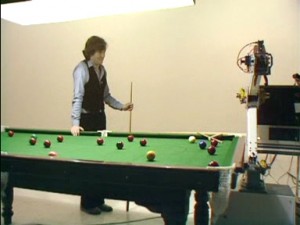 Then came the serious show’s Waterloo. Introducing a robotic arm named ‘Hissing Sid’, developed by the University of Reading cybernetics department (who gave us both Jimmy Saville’s Fix-It chair and the infamous Kevin Warwick), Kieran Prendiville at first struggled manfully with a live demonstration of its snooker-playing skills in the standard ‘World “live demo going tits up” manner, then, after a few minutes, visibly gave up and started to play the weary straight man in a sort of improvised slapstick double act. When the machine returned later in the show to attempt to stack some crockery with a suction attachment, all pretence at technological worship was dropped, and Prendiville (who would go on to write light comedy dramas for the Beeb in the ’90s) had hit upon what would become the main post-Baxter characteristic of the programme – the authoritative confidence in new technology had given way to the weary, “Cuh! Wouldn’t you just know it?” air of someone struggling vainly with a new video recorder, which became a hit with viewers who were wising up to the fact that the World’s Fair near future of jet-packs on the moon espoused by the Baxter-era ‘World just wasn’t going to happen.
Then came the serious show’s Waterloo. Introducing a robotic arm named ‘Hissing Sid’, developed by the University of Reading cybernetics department (who gave us both Jimmy Saville’s Fix-It chair and the infamous Kevin Warwick), Kieran Prendiville at first struggled manfully with a live demonstration of its snooker-playing skills in the standard ‘World “live demo going tits up” manner, then, after a few minutes, visibly gave up and started to play the weary straight man in a sort of improvised slapstick double act. When the machine returned later in the show to attempt to stack some crockery with a suction attachment, all pretence at technological worship was dropped, and Prendiville (who would go on to write light comedy dramas for the Beeb in the ’90s) had hit upon what would become the main post-Baxter characteristic of the programme – the authoritative confidence in new technology had given way to the weary, “Cuh! Wouldn’t you just know it?” air of someone struggling vainly with a new video recorder, which became a hit with viewers who were wising up to the fact that the World’s Fair near future of jet-packs on the moon espoused by the Baxter-era ‘World just wasn’t going to happen.
Rodd and Hann also joined in with the eye-rolling antics whenever the gadgets failed them, but they had, at least, started off from a position of seriousness. While Rodd admitted that Sid had been “a bit of a disaster,” he quickly added, “the things that go wrong add tremendous credibility to the things that go right.” Firmly in the old optimistic school of TW, Rodd wasn’t going to let a few cybernetic slip-ups spoil the show’s general air of benevolence just yet.
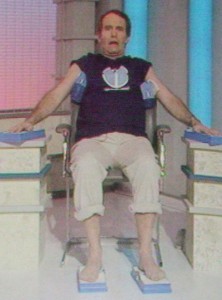 THE PRESENTERS: A mid-’80s revamp sent some of the (by now) old guard packing. Prendiville moved on to writing, and Rodd jumped ship to ITV’s short-lived rival sci-doc The Real World, before retiring from television to pursue business ventures like his educational software firm First Information.
THE PRESENTERS: A mid-’80s revamp sent some of the (by now) old guard packing. Prendiville moved on to writing, and Rodd jumped ship to ITV’s short-lived rival sci-doc The Real World, before retiring from television to pursue business ventures like his educational software firm First Information.
Into their shoes leapt ever more whimsical turns. Peter McCann was another presenter of the droll variety, ever ready to make the leap from Wollardian knitted-brow earnestness to gurning mock despair at the drop of a jam-smeared compact disc. Taking the view that since each new gadget had to prove itself in the viewers’ eye, it should also be seen to be winning over the impartial presenter, he approach technology sideways-on, always on the lookout for flaws and failures. He did, however, keep it real when the occasion demanded: when something actually did what it claimed, the sense of boyish relief was palpable.
The presenter-as-comedian approach reached its zenith when Kenneth Williams, no less, was drafted in for a brief period to test some of the more frivolous inventions (“Ooooh, look at all those micro-amps I’m generating!”) Cross letters poured forth, but it’s hard to deny that, his usual nostrilly upstaging tendencies aside, Cuddly Ken wasn’t such a mad choice to plonk among the early ’80s milieu of zip-up ties and air conditioned pith helmets. Wouldn’t have been so forgiving if it was our company’s earnest invention being gazed at down the Williams nose, mind.
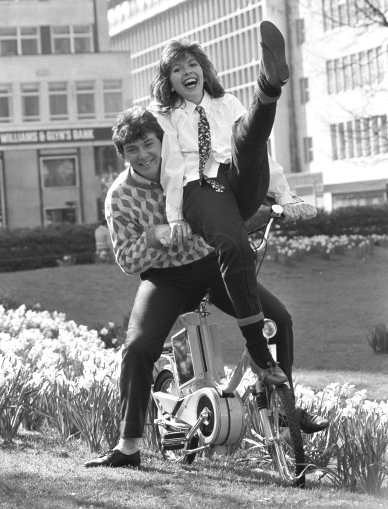 New kids on the block, in keeping with the fresh, more relaxed magazine format, were children’s TV presenters Howard Stableford and Maggie Philbin. Other short-termers included a pre-ITN news Anna Ford, a pre-Wildtrack Su Ingle, and Kate Bellingham.
New kids on the block, in keeping with the fresh, more relaxed magazine format, were children’s TV presenters Howard Stableford and Maggie Philbin. Other short-termers included a pre-ITN news Anna Ford, a pre-Wildtrack Su Ingle, and Kate Bellingham.
Best of all, however, was the introduction of avuncular, eccentric, bewhiskered Austrian inventor Robert Alexander Baron Schutzmann von Schutzmansdorff, better known as Bob Symes, on location in his “inventor’s shed”, exploring various inventions of the old ‘World variety with the catchphrase “it’s clever, isn’t it?”
THE TITLES: All change was the order of the day. In 1981 the fried egg titles were scrapped, along with Dankworth’s long-serving theme, to howls of injustice from the show’s loyal band of short-trousered viewers. In its place came a computer-controlled camera roaming the furrows of what eventually was revealed to be a kind of brain/planet plastic model, interspersed with little techy close-ups – a quartz crystal, a computer wireframe cityscape etc. Accompanying this was a synthesized piece by Martin Cook and Richard Denton, all proto-techno riffing and heavenly choirs, sounding like a cross between Jean Michel Jarre and their own Great Egg Race signature tune. This all helped to give the programme a bit of introductory gravitas, making it clear that the ‘World was cut from the same scientific cloth as its serious stablemate Horizon. Albeit into a slightly wackier shape.
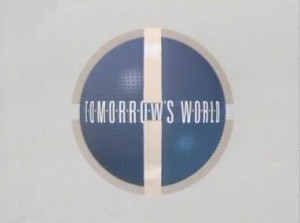 |
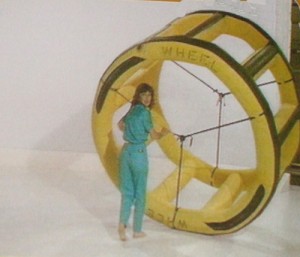 |
Then came a sure sign that all was not well on board ship, as in 1985 it all changed again. The globe became an odd blue golf ball, with goldfish, a computerised head made of bricks, and, most dated of all, a colourised Charlie Chaplin film all conspiring to create what was hoped to be the new, ‘brighter’ image for the ‘World. The theme was changed yet again, this time to a ghastly synthetic trumpet fanfare, which brought to mind the likes of Antiques Roadshow or Miss Marple rather than an examination of cutting edge technology. Not good.


As the ’80s ended, so the ’90s began for the ‘World, under the affable command of Captain Stableford. But a new producer in 1994 meant a year zero revamp. Out went virtually all the ’80s presenters, out went studio demonstrations and in came packages linked by Carol Vorderman on a high stool in a small blank studio. It was cheap, but it wasn’t cheerful. Later on, as if in admission of defeat, the studio demos gradually crept back in. Like all popular BBC factual programmes (Top Gear, Watchdog, Holiday) it spawned a live show at the NEC and some on-screen spin offs, but the cracks were showing as ratings slipped.
THE PRESENTERS: Hann dropped out in 1994 after a record 20 years’ service, to write and set up a media training centre. Stableford dropped out later, to become a ‘motivational speaker’ amongst other things. Carmen Pryce was the first of many nondescript short stay recruits, with the late John Diamond being the briefest, with a two weeks’ stint. Vorderman was unceremoniously dumped after taking the Proctor and Gamble ad shilling. Philippa Forrester and Peter Snow (in over-zany uncle mode) made some headway back into the national consciousness during the late ’90s. For the final series, some semblance of sense took hold as old-school enthusiast Adam Hart-Davis came in, but by then it was too late. The show was finally axed at the end of 2002, to little public outcry, save for a furious Raymond Baxter. For too long it had limped along as a health-cum-computing magazine without portfolio, point or personality. The real Tomorrow’s World had sadly long become a part of yesterday, along with that narrow band of future shock mania it was brought in to serve. Not the programme’s fault – if anything, it had managed, just about, to keep the robotic dream alive for a good few years longer than social circumstances would otherwise have allowed. We like to think of Hann’s gracious curtain call as the programme’s real, dignified, last hurrah. By then, it’s fair to say, we’d seen the future. One or two bits of it even worked.
THE TITLES: Plenty of changes, none of them edifying. They quickly ditched the blue and white 80’s look and went straight for an unmemorable weird shadowy-objects-on-blue-baize affair, accompanied by an overly drummy theme tune later all but nicked for Time Team, and, oddly, no on-screen programme title. Then, when that quickly palled, in came an electro-orchestral sequence starring a Nirvana-style swimming baby. All were depressingly reminiscent of the drab blue ‘friendly’ makeover of a Job Centre, and destined to be fondly remembered by nobody. We could murder a fried egg.
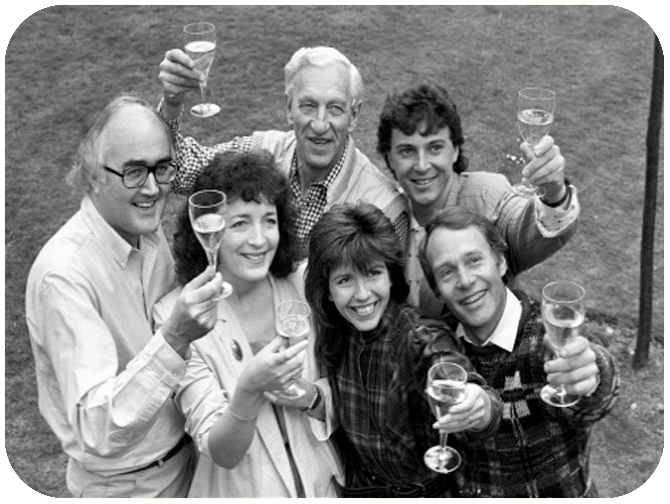



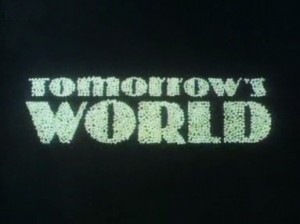



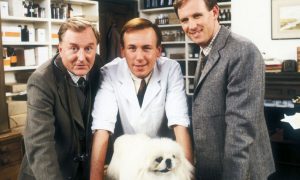

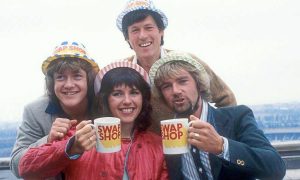




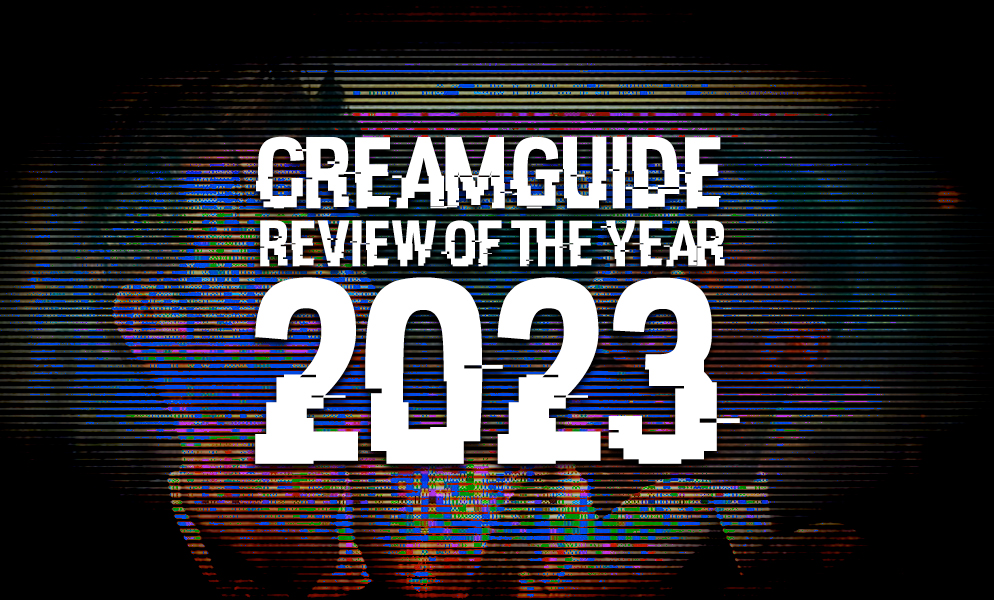

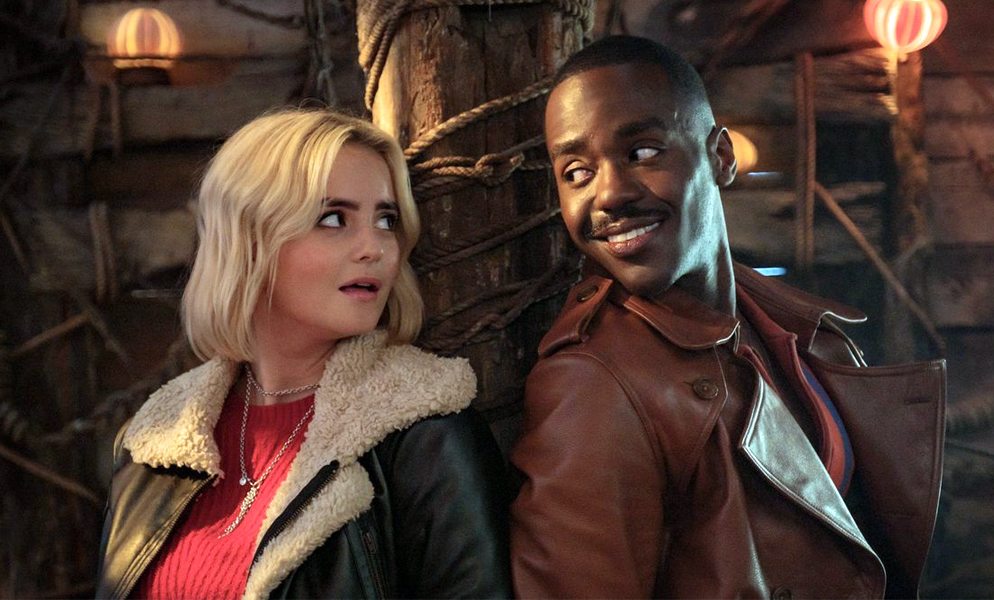
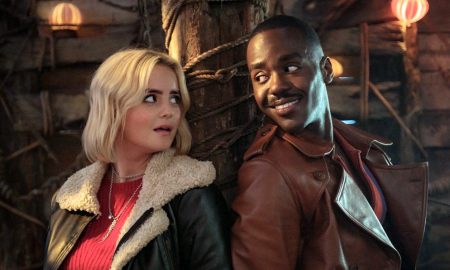
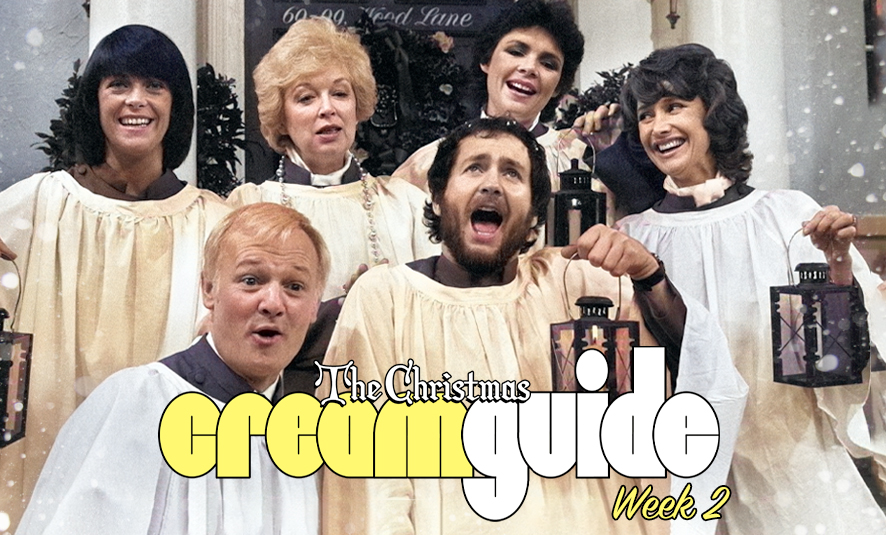
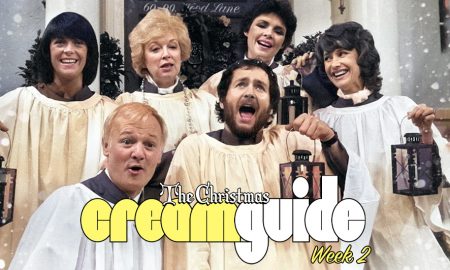
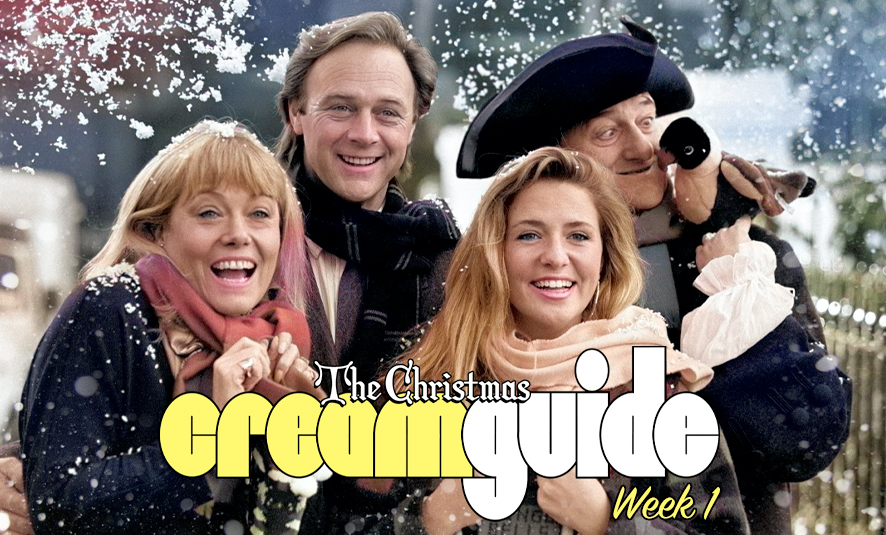

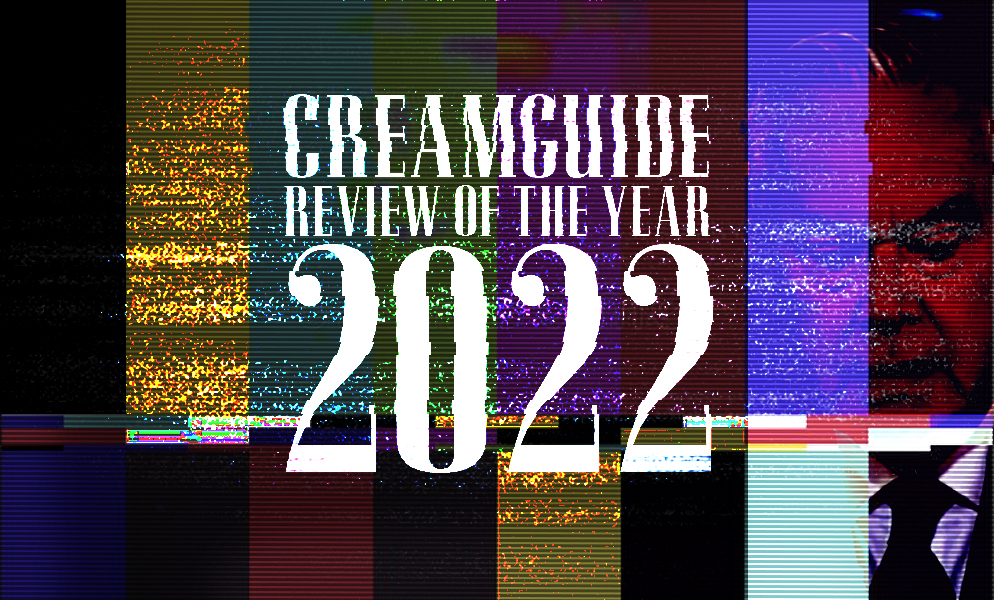
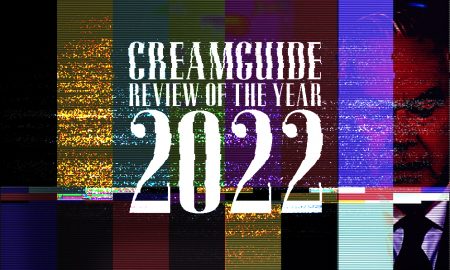

televisualcabbage
February 10, 2010 at 8:09 pm
But let us not forget the excellent parody of the late 70’s/early 80’s period in Look Around You… Its put into focus how we thought about things to come, then again I never thought Hissing Sid would make to The Crucible…
johnnyboy
February 10, 2010 at 11:55 pm
I remember an episode when vinyl was still ‘it’ (mid-eighties, I think). A huge, black lathe was wheeled in and it was for the creation of your own 12in picture disc. You got 2 one-side LP – or 12in single transparent parts – how I don’t know, and using the lathe (or press, now I think about it) you placed the picture between the separated sides of the disc and it stuck’em together. Of course, being live, did the glue stick the sides together? Did it buggery. Science CAN be fun, you know.
Also, that fantastic Cook and Denton title music can be distinctly heard playing in the background part-way through the seminal 80’s apocalyptic Tv movie “Threads”. It certainly sets the time-period nicely.
Arthur Nibble
February 11, 2010 at 3:02 pm
Always guaranteed to have something to do with operations or brains, livers etc. just as you were tucking in to the best bit of your dinner.
PS – That big blue armchair picture…is that a Tomorrow’s World prediction of what Richard Ashcroft and Danny Baker will look like in the future?
Michael S
August 21, 2011 at 9:33 pm
One could argue about where TW’s “jump the shark” moment was, but for my money it was (in retrospect) the Vorderman-fronted dullness of the mid-90s.
At the time I thought this might be a good thing- the changes were pitched as being more serious and taking a more in-depth looks at the implications of the science. However, in retrospect it’s clear that they were upping the “human interest” quotient (e.g. showing parents following their child’s progress in hospital). While considering the human consequences *is* a legitimate concern, the general approach didn’t really work for TW, and the whole “human interest angle” thing has been a very negative influence on dumbed-down science TV in the past 15 years, resulting in contrived narratives involving the presenters’ personal quest (rather than them just explaining the facts).
Vorderman meanwhile… good riddance. The Persil advert featured a *very* similar reconstruction of the then-current TW set and it’s obvious she was abusing the authority granted to her as the presenter of the programme.
It was around this time that my dislike of Vorderman grew, as she shamelessly started exploiting her “brainy” image for every penny it was worth (e.g. appearing on GCSE revision materials)… and this was before the now-notorious loan adverts.
Martin
October 10, 2011 at 5:10 pm
I remember Michael Rodd demonstrating a telephone link that used two portable lamps directed each other using the light beam as an audio communications path. Cutting edge stuff I thought, until I saw the same device in a WW2 museum in Guernsey, the Germans had been using them in the 1940’s. Had I been watching Tomorrows World or All Our Yesterdays?.
johnnyboy
October 14, 2011 at 11:50 am
Another ‘mark of the future’ telephone japery was a demo of a live actual video line from one part of London to the other, just via the telephone lines in the ground. Needed 30 of the lines though for it to work! Was b/w and extremely blocky. Could’ve been from the Moon for all I knew (like we’ve ever been there 😉
Martin
November 14, 2011 at 1:24 pm
Yes, a lot of the inventions shown were either ‘old hat’ or just impractical. I worked with an old boy in the PO when I was apprenticed in the 70’s, he had been on a course at Dollis Hill Research Centre not long after WW2 where they demonstrated working phone kiosks with video links between them. Obviously they were never used, probably because they (like the above) would have been copper line hungry and a magnet for vandalism.
Graham
September 13, 2014 at 10:13 pm
Although I had no such problems with watching Tomorrow’s World, the programme was axed in 2002 due to poor perception and a less prominent transmission spot. Products I remember coming out include the Sinclair C5 and the eco friendly street lantern in anaattempt to cut light pollution.
Graham
September 13, 2014 at 10:15 pm
Although I had no such problems with watching Tomorrow’s World, the programme was axed in 2002 due to poor perception and a less prominent transmission spot. Products I remember coming out include the Sinclair C5 and the eco friendly street lantern in an attempt to cut light pollution. Raymond Baxter the original chief presenter of Tomorrow’s World is dead.
Glenn A
January 8, 2015 at 10:19 pm
@ Jonnyboy, I was watching Threads a few months ago and the mid eighties TW theme is playing in the background in the pub( this being the days before Sky and the tyranny of endless live football in pubs). Perhaps a science programme with an emphasis on the future, was perhaps apt for a drama about approaching nuclear war and a Tomorrow’s World no one would want to live in.